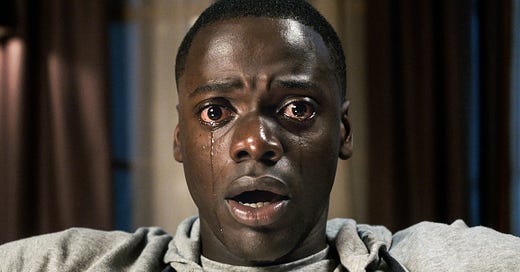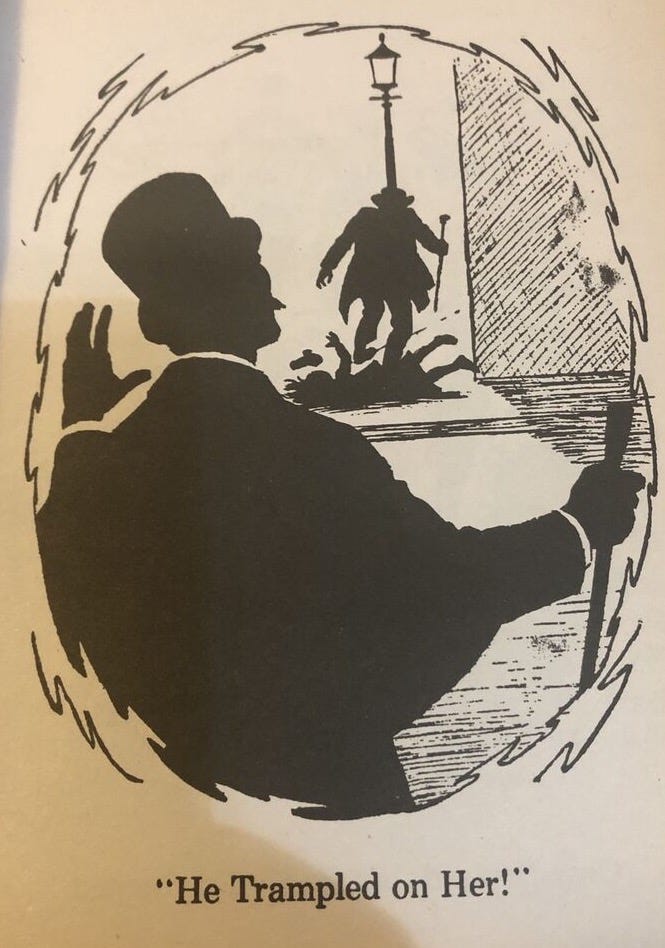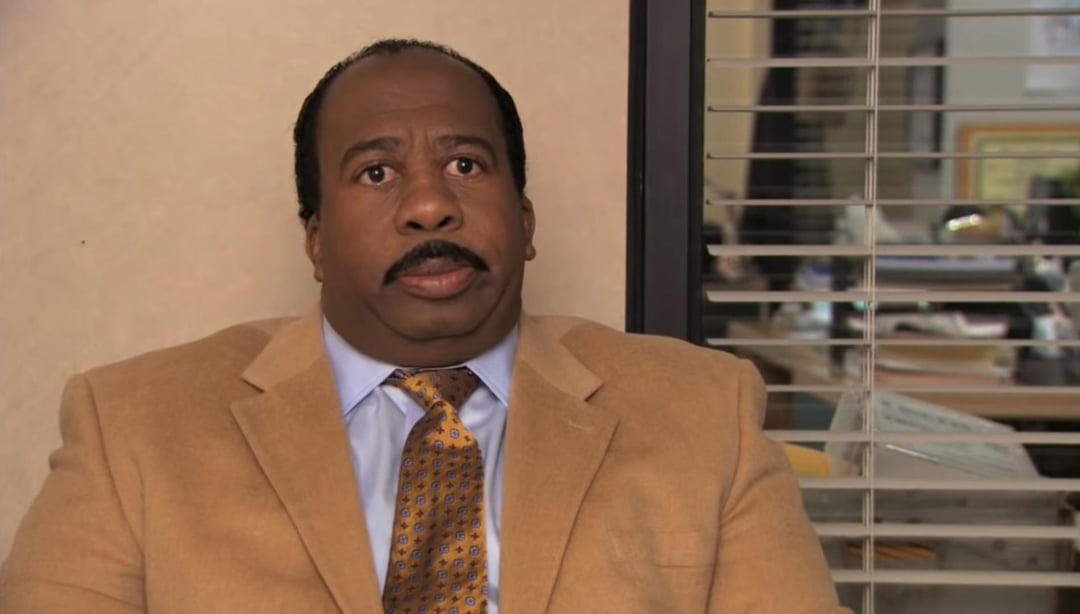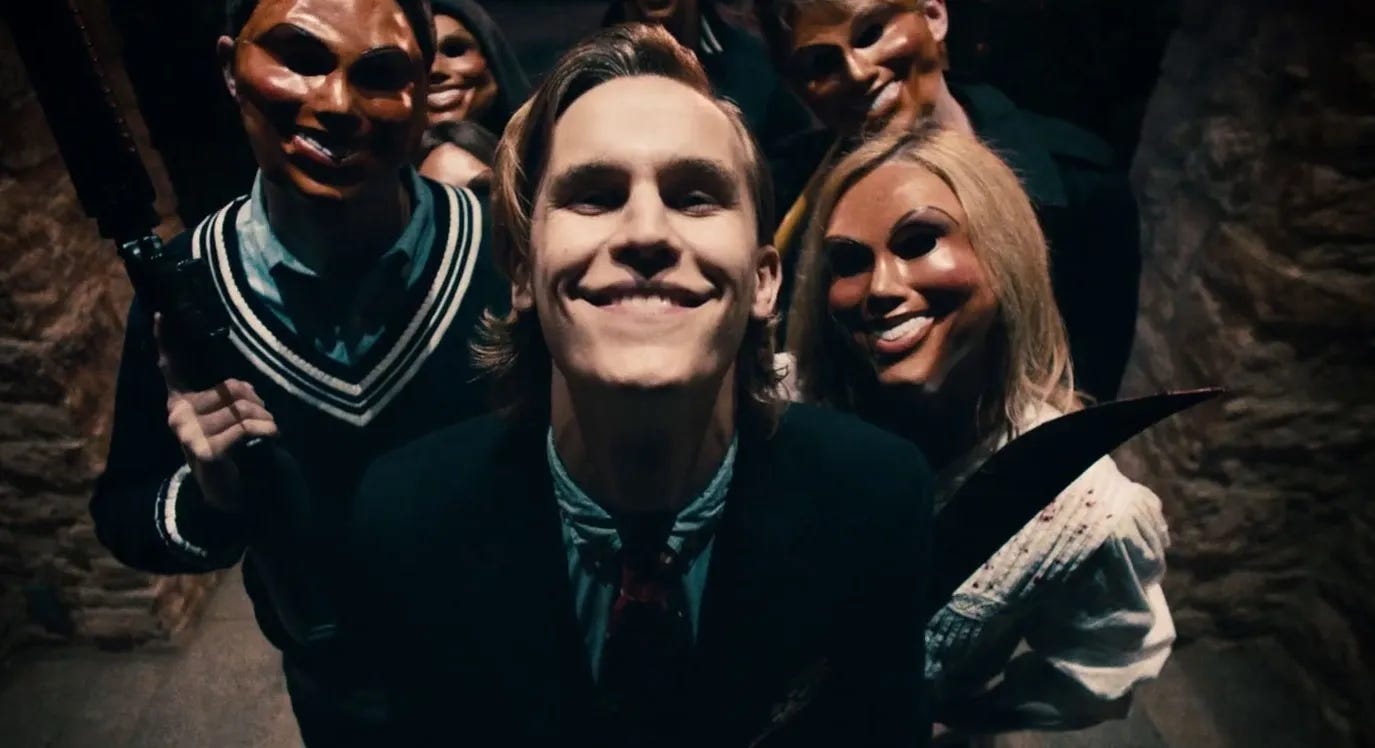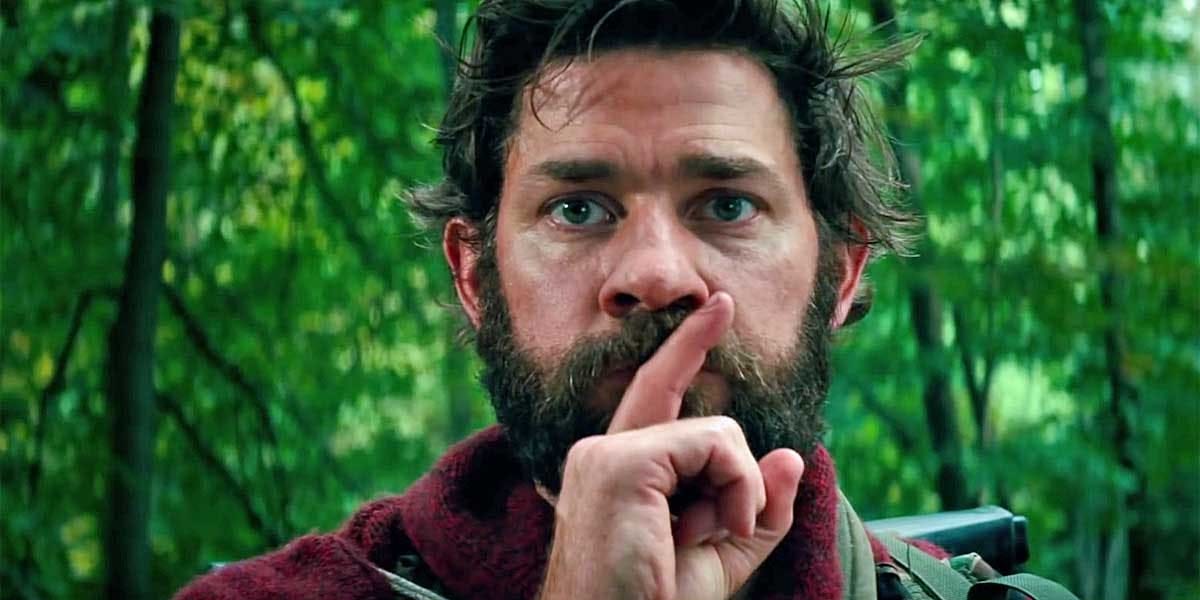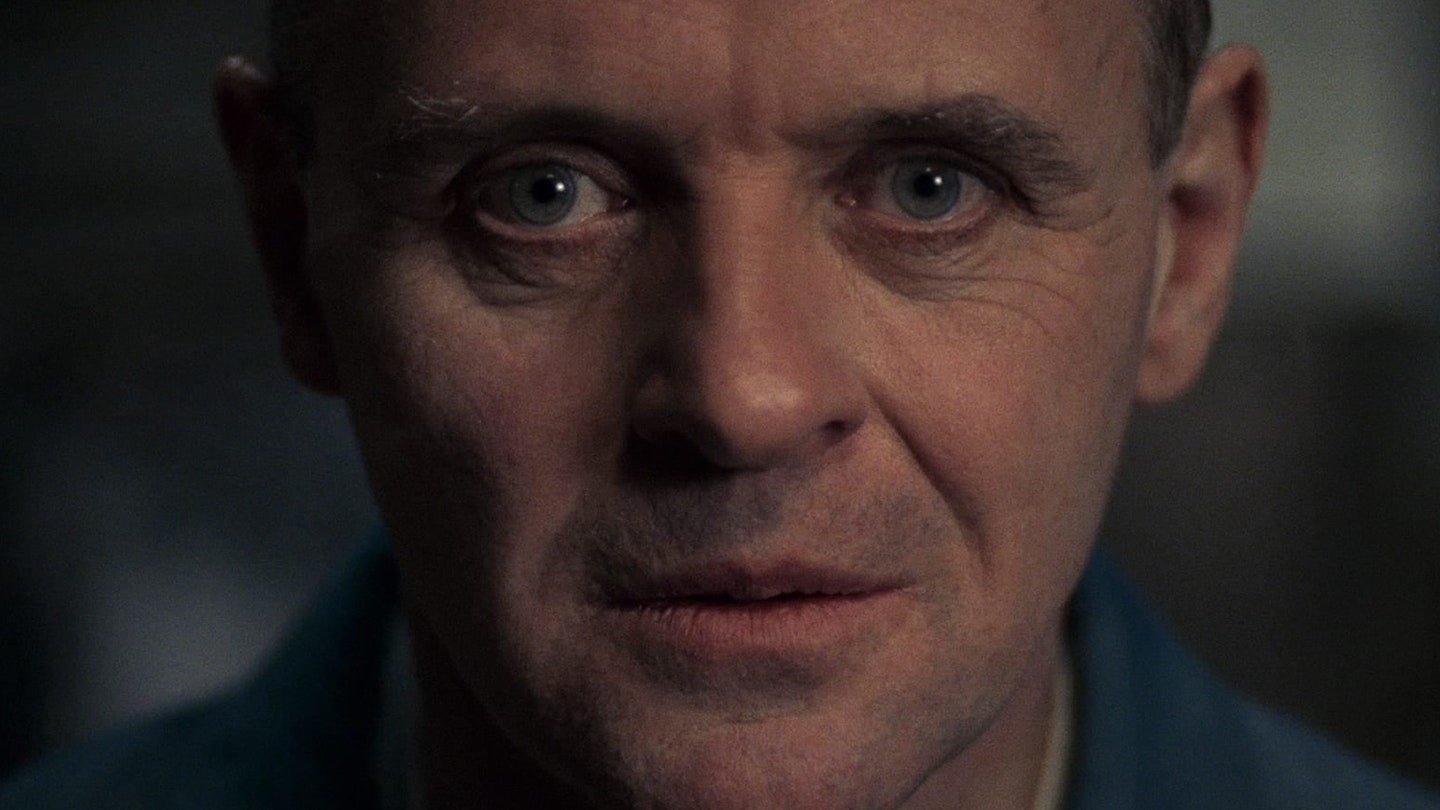
It was the clap that did it.
Not the dark stairwell. Not the tense silence. Not even the creepy doll.
No, when I closed my eyes at night, it was that darn clap that occupied my thoughts.
The Conjuring came out in the summer of 2013. So let’s say I’m seeing this trailer in the spring. That means I’m twelve years old. I’m learning about Mesopotamia, and probability, and mitosis. I’m getting big into Imagine Dragons (see previous post). I probably just got cut from the baseball team.
And I’m losing sleep over an unexpected round of applause.
The Conjuring trailer was my first brush with horror. Genuine horror, I mean.
I’ve always had a proclivity towards the utterly macabre, but it was tempered by my abysmal tolerance for fear.
When I was around six years old, my family started calling me Caleb Caleb Poe because I would write creepy little poems and short stories. My parents tried to keep violence in media to a minimum in our house, but for some reason I still would write (and illustrate) stories about knights who fought each other to epic and gory demises.
The Harry Potter books scared me pretty bad when I was young. I remember staying up late to read the end of the fifth book, consumed by the gripping suspense of the gang’s foray through the Department of Mysteries. I also remember being embarrassingly terrified of the aquarium of brains.
In middle school, we read The Strange Case of Dr. Jekyll and Mr. Hyde, and something in me was fascinated by the dark, grimy, gothic nature of the tale. I was also extremely bothered by a silhouetted drawing of Mr. Hyde trampling a young girl.
For a time, the most scared I had ever been was while watching “The Hounds of Baskerville,” the second episode of the second season of the BBC’s Sherlock. There’s a moment in which Sherlock’s fear-stricken client, Henry Knight, stands in front of a floor-to-ceiling, wall-to-wall window and looks out at his lawn. It’s night, so he can’t really see anything out there.
That image haunted me for years, and I’m still not really sure why.
The point of all of this background is to introduce myself as someone who has always been extremely interested in horror but also too scared to actually, you know, watch a horror movie.
This changed a little over three years ago, when a girl I liked texted me with an innocuous query. She asked if I wanted to watch a scary movie with her.
“Sure,” I typed, like a liar. “What’d you have in mind?”
Please be Coraline. Please be Coraline. Please be—
“How about the conjuring?”
Did I yelp when the dog died? Of course I did.
Did I violently convulse when the creepy ghost lady mama-birded creepy ghost goo into someone’s mouth? Sure.
But you better believe that I was ready for the clap1.
1. A horror premise is a good premise
Today, we’re going to figure out why a coward like me is drawn to horror. I think the most logical place to start is this: horror movies tend to have fascinating premises.
The premise of a movie is the world-building question that the rest of the movie tries to answer. Usually, it starts with “What if…?” For example: what if a rat could cook?
Most movies have interesting, attention-grabbing premises. That’s why they’re able to get made at all.
But check out these premises for horror movies:
“What if all crime was legal for 12 hours out of the year?”
“What if a sexually-transmitted demon stalked you forever?”
Still interesting. Still attention-grabbing. But there’s also an inherent challenge to these premises. A horror movie, more than any other genre, is a puzzle waiting to be solved2.
Everyone knows how they would “win” The Purge3. And as soon as you learn the plot of It Follows, you can’t help but brainstorm how to beat the film’s central STD4.
All (good) movies establish a world with clear rules. In horror movies, that world poses a threat to the protagonist. This makes the set-up itself antagonistic and triggers our imagination and problem-solving instincts. Clear rules + something to overcome = a game for us to play.
2. A horror theme is a good theme
Horror exists as a genre because people like to be scared.
But deeper than that, I think people like to be communally scared.
Usually, fear is something experienced alone. In a dark house at night, a distant creak might quicken your pulse. But you also know that, mostly likely, nothing is wrong, and so you feel slightly ridiculous for being scared.
Horror movies remove that stigma. You sit with a group of people to watch something fake, and you know that everybody’s going to get scared. The shouts and screams from the crowd contribute to a sense of community and fun.
At the same time, the writers of horror movies get to take something that personally scares them and thrust that fear onto the audience.
It’s all about communal fear.
Netflix’s The Haunting of Hill House opens where most horror stories end. The Crain family flees from their ghost-ridden manor, losing their mother in the process.
The series then explores the fallout of that terrifying night, growing into a thorough examination of grief and the effects of childhood trauma on those who survive it.
The show expresses both the deep fear held by the surviving family members and their fruitless attempts to escape the past via physical manifestations of their emotional turmoil. Namely, ghosts.
In other words, the writers of Hill House wielded horror as a tool. By using a haunting to depict the long-lasting psychological effects of trauma, they forced the audience to reckon with those same feelings.
When I’m scared to close my eyes at night for fear of seeing the Bent Neck Lady, I am directly relating to Nell in the show.
No other genre has this effect. Yes, a sports movie makes you happy when the team wins. Sure, a sad movie makes you cry with the protagonist. But my sports team didn’t actually win. Someone close to me hasn’t actually died.
But when I watch Hill House, you better believe I am actually, truly, really terrified.
Jordan Peele’s Get Out (2017) accomplishes a similar feat. When Chris goes to visit his girlfriend’s family for a weekend, we are thrust into an unnerving, uncomfortable world where race is commodified and the white people are always up to something.
Once again, the writer’s fear becomes the protagonist’s fear which then becomes the audience’s fear. The film takes a serious, real-life sentiment and heightens it with horror techniques. The results are both visceral and long-lasting.
3. A horror thrill is a good thrill
I didn’t think I’d ever understand what people meant when they compared horror movies to amusement park rides.
Even after my exposure therapy with The Conjuring5, scary movies were simply too scary for me. I was intrigued by the premises, and I respected the themes, but I still preferred to read Wikipedia articles for such films rather than actually watch one.
Then I saw Malignant.
If you are even a little bit interested in horror and you haven’t watched Malignant, it’s time to fire up Max and grab some popcorn. It is bonkers.
My point with this one is not that it explores an intriguing premise (what if your childhood imaginary friend came back to haunt you as an adult?) or that it manifests a real-world fear (domestic abuse); rather, what makes it stand out is the slam-bang finish.
I don’t want to spoil it for you. But the ending is ridiculous, campy, and FUN.
That’s right, reader. I had fun watching a horror movie.
After Malignant, I began to understand what people meant with the amusement park analogy. Movies like A Quiet Place (what if there were monsters that couldn’t see but could hear really well?) and Poltergeist (what if ghosts communicated through the TV?) are occasionally-scary-but-mostly-thrilling films that get your heart pumping but don’t ruin the rest of your night.
Of course, there are also movies like Insidious (what if it’s not the house that’s haunted…it’s YOUR SON!) that get your heart pumping and ruin the rest of your month.
I’m still working up to those ones.
4. A horror movie is a good movie(?)
Many of the greatest movies of all time are scary.
Films like The Shining and The Silence of the Lambs are celebrated accomplishments in cinema. They succeed where any other great movie succeeds: brilliant filmmaking, immersive performances, and a smart script all working together to elevate the story.
But they also feature everything we’ve discussed so far: puzzling premises, thought-provoking themes, and extreme thrills. Great movies linger in your mind after you first watch them; great horror movies stick around even longer, because a creepy set-up is almost guaranteed to haunt you after viewing.
Needless to say, the horror genre has its fair share of stinkers as well. While the ability to create scares on the cheap has produced some of the most profitable films of all time (think Blair Witch Project and Paranormal Activity), it’s also responsible for some real bummers (think Jason X).
But when all the pieces are there, horror can elevate an already great movie into something eternal.
In Conclusion…a horror movie is a movie.
And just because it’s scary doesn’t mean that we, the cowardly caucus, can’t watch it.
I have seen and can personally vouch for every movie I’ve mentioned in this post. Insidious scared me the most, but even that was manageable due to its cool plot and twisty ending (even if it kind of ruined “Tiptoe Through the Tulips” for me).
The key, for me6, is to appreciate the craft that goes into fabricating a meaningful scare. It’s the same masterful combination of art and science that makes us laugh or cry or cheer or feel any other powerful emotion over the course of a fictional story.
There’s something special about forfeiting control of your emotions for an hour and half7. After all, isn’t that the whole point of movies?
So next time someone asks you to watch a scary movie, don’t say no immediately. Take a moment to appreciate the premise, themes, and thrills of the film. To consider the hard work that went into crafting an emotions-hijacking work of art. To fully—
Wait, it’s Terrifier 3? Absolutely not.
🤡
In a much more real sense, I was NOT ready for the clap.
I’m aware that there is an entire genre called “Mystery.” I said what I said.
The answer is, as I’m sure many of you know, is to install a multi-million dollar security system, lock down your bunker, make sure nobody’s looking, and wear your socks to sleep.
I think a well-placed bag of flour would do wonders here.
I should mention that my courage in the face of those God-forsaken claps did indeed win over the girl.
;)
Another pro of horror movies that didn’t get its own section: a horror movie is (usually) a short movie.


